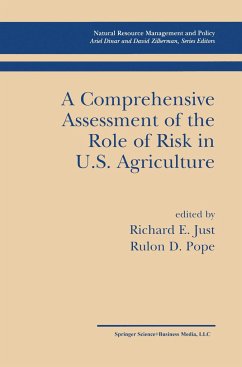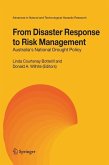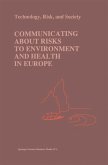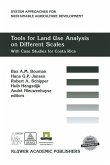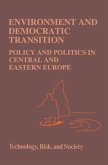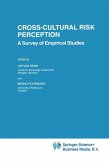After all the research on agricultural risk to date, the treatment of risk in agricultural research is far from harmonious. Many competing risk models have been proposed. Some new methodologies are largely untested. Some of the leading empirical methodologies in agricultural economic research are poorly suited for problems with aggregate data where risk averse behavior is less likely to be important.
This book is intended to (i) define the current state of the literature on agricultural risk research, (ii) provide a critical evaluation of economic risk research on agriculture to date and (iii) set a research agenda that will meet future needs and prospects. This type of research promises to become of increasing importance because agricultural policy in the United States and elsewhere has decidedly shifted from explicit income support objectives to risk-related motivations of helping farmers deal with risk. Beginning with the 1996 Farm Bill, the primary set of policy instruments from U.S. agriculture has shifted from target prices and set aside acreage to agricultural crop insurance.
Because this book is intended to have specific implications for U.S. agricultural policy, it has a decidedly domestic scope, but clearly many of the issues have application abroad. For each of the papers and topics included in this volume, individuals have been selected to give the strongest and broadest possible treatment of each facet of the problem. The result is this comprehensive reference book on the economics of agricultural risk.
This book is intended to (i) define the current state of the literature on agricultural risk research, (ii) provide a critical evaluation of economic risk research on agriculture to date and (iii) set a research agenda that will meet future needs and prospects. This type of research promises to become of increasing importance because agricultural policy in the United States and elsewhere has decidedly shifted from explicit income support objectives to risk-related motivations of helping farmers deal with risk. Beginning with the 1996 Farm Bill, the primary set of policy instruments from U.S. agriculture has shifted from target prices and set aside acreage to agricultural crop insurance.
Because this book is intended to have specific implications for U.S. agricultural policy, it has a decidedly domestic scope, but clearly many of the issues have application abroad. For each of the papers and topics included in this volume, individuals have been selected to give the strongest and broadest possible treatment of each facet of the problem. The result is this comprehensive reference book on the economics of agricultural risk.
`In the concluding chapter, the editors of the book attempt to draw together eight `themes' that emerge from the preceding sections. This is done in a very concise fashion and results in an excellent summary of the current state of play in the subject as a whole. The book shows evidence of close editorial control. It is an excellent and heavyweight book, which should be on the shelf of every researcher who is seriously interested in risk in agriculture.'
European Review of Agriculture Economics, 29:4 (2002)
`This book, written by leaders in the field of risk and risk management in agriculture, provides an excellent reference book for anyone wanting to understand and pursue economic research on agricultural risk in the United States.'
American Journal of Agricultural Economics (November 2003)
European Review of Agriculture Economics, 29:4 (2002)
`This book, written by leaders in the field of risk and risk management in agriculture, provides an excellent reference book for anyone wanting to understand and pursue economic research on agricultural risk in the United States.'
American Journal of Agricultural Economics (November 2003)
`In the concluding chapter, the editors of the book attempt to draw together eight `themes' that emerge from the preceding sections. This is done in a very concise fashion and results in an excellent summary of the current state of play in the subject as a whole. The book shows evidence of close editorial control. It is an excellent and heavyweight book, which should be on the shelf of every researcher who is seriously interested in risk in agriculture.' European Review of Agriculture Economics, 29:4 (2002) `This book, written by leaders in the field of risk and risk management in agriculture, provides an excellent reference book for anyone wanting to understand and pursue economic research on agricultural risk in the United States.' American Journal of Agricultural Economics (November 2003)

